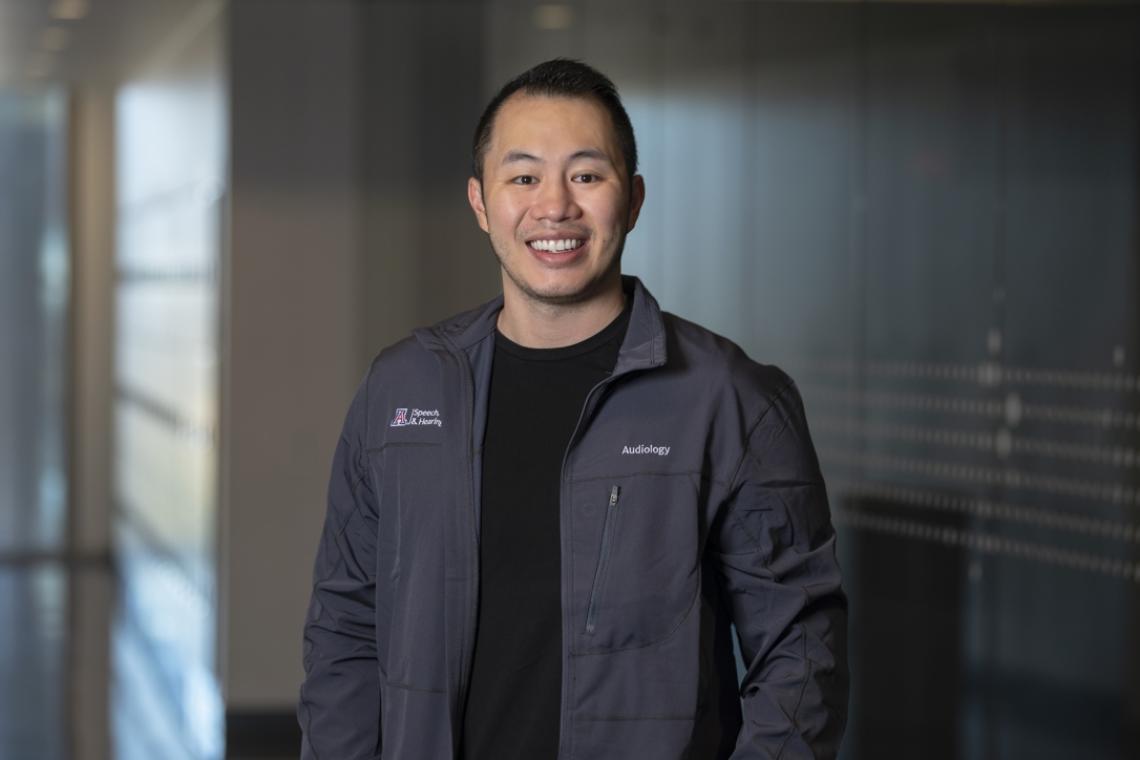Student Perspectives
Headshot - Cailtin Moffet.jpg

Lateral View - Bryan Wong - Resized.jpg

Caitlin Moffett, MS
Former student, HSD 597: Design for Health Workshop: Addressing Human Health Challenges with Design Thinking (2021)
Why did you decide to take the class?
I had previously met with Dr. Kiehlbaugh about a space health course. While there is plenty of NASA-funded research at UA (I worked for the HiRISE mission on campus), there is little offered for manned spaceflight projects which, as a biomedical engineer, is what I wanted my focus to be. The Health Sciences Design course allowed me to learn more about design principles and apply them to topics I was specifically interested in.
What was your favorite part/highlight?
I loved our project related to the COVID-19 vaccination site on campus. We received a behind-the-scenes tour, spoke with the engineer in charge coordinating the site and were able to share our ideas for developing better human design in the process. Compared to other classes I’ve taken, this project was relevant to an immediate need of the local health community and was local enough for us to see the impacts firsthand.
Where do you work now?
Axiom Space in Houston, Texas.
Can you describe your current position?
My title is Spacecraft Analyst Engineer for the Axiom Space station program. I get to do a little bit of everything, but I specifically manage our master equipment list, track launch mass and coordinate our mission sequence for our first habitation module!
How does the Health Sciences Design class translate to your current position?
My term project for the course was centered on the human health risk posed by lunar dust on spacesuits. While I work on space stations and not suits, much of the research I did in investigating the lunar and low-gravity environments translates well to designing hardware that is intended to be livable and comfortable for humans in the most inhospitable of environments. Plus, Axiom Space recently won the NASA task order to build the next suit that’ll be on the moon for Artemis III, so I haven’t entirely abandoned my interest in space suits.
What was the biggest take-away from the class that you took with you into your career?
The importance of diversity in the design process. We learned how different backgrounds and experiences affect design and are necessary to develop products or tools that can be used by all. Now that I work in the aerospace industry, where I often don’t have the same lived experiences as my coworkers, I’m aware of how my perspective and voice is valuable when engineering for the future.
What advice would you give to a student interested in taking Health Sciences Design Class?
Take it. This class is an excellent mix of lecture and project-based learning. Dr. Kiehlbaugh does a phenomenal job of teaching foundational design skills in different ways and then supporting you applying those skills to a relevant and interesting project — all within a semester! In all six years of my time at UA, this was by far one of my favorite courses and professors. I’m excited to see this program develop and more classes of this caliber be offered to students. It’s not enough to learn the science, we need to learn how to apply that knowledge to the real world and consider how to make health and design accessible to all.
Bryan Wong, AuD, CCC-A
Former student, HSD 597: Design for Health Workshop: Addressing Human Health Challenges with Design Thinking (2021)
Why did you decide to take the class?
What really excited me about this class was the opportunity to learn about holistic problem-solving techniques and apply them to real healthcare issues. It was very appealing that this class offered project-based and hands-on learning.
What was your favorite part/highlight?
There is a trifecta of highlights. The first was the professor, Dr. Kiehlbaugh, whose passion and expertise inspired us to challenge our preconceived notions of healthcare and imagine/design better solutions. Secondly was the collaborative environment that allowed students from varying disciplines to openly explore “off-the-wall” ideas. The last was freedom — freedom to choose our own project and design an intervention centered around a particular health issue that interested us.
How does the Health Sciences Design class translate to your current classwork, teaching, and/or research?
The project I worked on for the HSD class has evolved to become part of my dissertation research that explores the use of 3D printing technology to increase hearing healthcare accessibility. This class helped me to lay the groundwork necessary to design a targeted intervention centered around the needs of individuals with hearing loss and audiologists.
What was the biggest take-away from the class that you took moving forward in your career?
People first. Always. Interventions should be designed for, and include the voices/expertise of, the individuals they will serve. Empathizing and understanding the needs of the target audience can provide valuable insights into designing an intervention that they will actually use.
What advice would you give to a student interested in taking Health Sciences Design Class?
Be open to ideas, don’t be afraid to unleash your creativity and have fun! Also, bring thinking snacks — gummy bears are my favorite.

